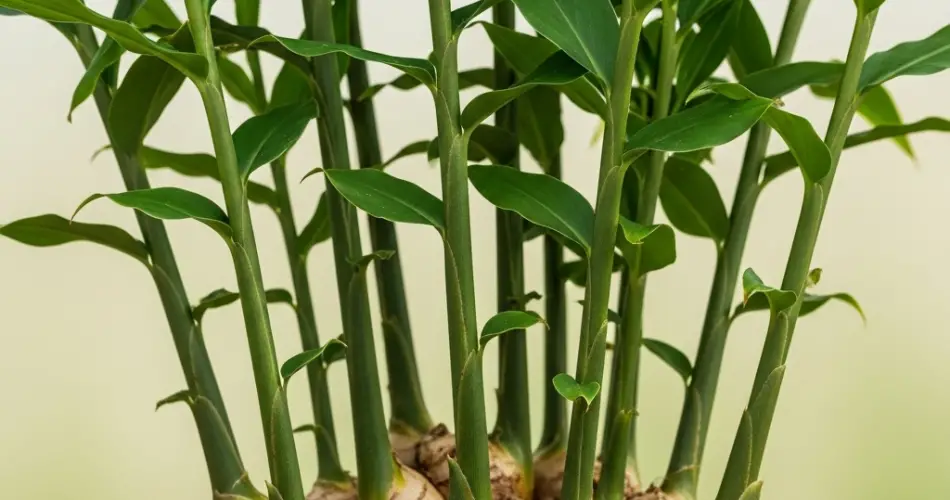Ginger (Zingiber officinale) is a beloved tropical plant known for its aromatic rhizomes, which are widely used in cooking, teas, and traditional medicine. While growing ginger at home can be rewarding, one of the most common questions among gardeners is: how long does it take for ginger to fully mature? The answer depends on several factors including growing conditions, the variety of ginger, and how you plan to use the rhizomes.
Understanding the Ginger Life Cycle
Ginger is a perennial plant typically grown as an annual in most home gardens. It thrives in warm, humid climates and requires rich, well-draining soil, consistent moisture, and partial shade to grow successfully. The plant grows from a rhizome—an underground stem—and develops roots, leafy shoots, and eventually, new rhizomes that can be harvested.
Once planted, ginger goes through the following stages:
-
Sprouting (2–4 weeks): After planting a ginger rhizome, it usually takes two to four weeks for shoots to emerge above the soil, depending on soil temperature and moisture.
-
Vegetative Growth (3–4 months): During this phase, the plant produces lush green leaves and continues to develop underground rhizomes.
-
Maturation (8–10 months): Ginger is considered fully mature when its foliage begins to yellow and die back. This indicates that the rhizomes have developed fully in size, flavor, and nutritional value.
When Can You Harvest Ginger?
There are two main stages when ginger can be harvested, depending on how you plan to use it:
1. Baby Ginger (Early Harvest – 4 to 6 months)
If you’re looking for young, tender ginger with a mild flavor and thin, edible skin, you can harvest baby ginger after about 4 to 6 months of growth. At this stage, the rhizomes are not fully mature but are ideal for pickling, juicing, or using in dishes that require a delicate ginger flavor.
To harvest baby ginger, gently dig around the base of the plant and pull up a portion of the rhizome without disturbing the rest of the plant. This allows you to harvest selectively while still giving the remaining rhizomes more time to mature.
2. Mature Ginger (Full Harvest – 8 to 10 months)
For fully mature ginger with a strong flavor and firm texture, you’ll need to wait 8 to 10 months after planting. The signal that ginger is ready for full harvest is when the leaves and stems begin to yellow and dry out naturally. At this point, the plant stops directing energy toward leaf growth and concentrates it in the rhizomes underground.
Mature ginger is best suited for drying, powdering, long-term storage, or culinary use in cooked dishes. Harvesting at full maturity ensures that the rhizomes contain the highest concentration of oils and active compounds like gingerol.
Factors That Influence Ginger Maturity
While 8 to 10 months is the general timeline for ginger to reach maturity, several factors can speed up or slow down the process:
-
Climate and Temperature: Ginger prefers temperatures between 24°C to 30°C (75°F to 86°F). Cool weather can slow growth considerably, while consistently warm temperatures support faster development.
-
Soil Quality: Loose, fertile soil rich in organic matter encourages rhizome expansion. Compacted or poorly draining soil may stunt growth and delay maturity.
-
Moisture: Ginger requires consistent moisture, but not soggy conditions. Inadequate watering or waterlogging can hinder rhizome development.
-
Fertilization: Regular feeding with compost, worm castings, or organic liquid fertilizers helps the plant produce larger, healthier rhizomes.
-
Growing Container vs. Ground: Ginger grown in containers may mature slightly faster due to warmer soil temperatures and more controlled conditions. However, it may produce smaller rhizomes compared to plants grown directly in the ground.
Tips for a Successful Ginger Harvest
-
Start Early: Plant ginger in early spring in warm climates or indoors in cooler regions. This gives the plant a long growing season.
-
Choose Healthy Rhizomes: Use disease-free, plump rhizomes with visible eyes (buds) to ensure strong growth.
-
Mulch Generously: A thick layer of mulch helps retain moisture, suppress weeds, and maintain optimal soil temperature.
-
Use Partial Shade: Ginger prefers filtered sunlight. Too much direct sun can dry out the soil and damage the tender leaves.
-
Patience is Key: Ginger is a slow-growing crop. Avoid rushing the harvest if you want fully developed, flavorful rhizomes.
Storing Harvested Ginger
After harvesting, gently wash the rhizomes and allow them to dry in a shaded, well-ventilated area for a few days. For short-term use, store fresh ginger in the refrigerator. For long-term preservation, consider freezing, drying, or turning it into powder or paste.
In Summary
Ginger takes 4 to 6 months to produce baby ginger and 8 to 10 months to reach full maturity. The exact time will vary depending on environmental conditions and care practices. With the right setup and a bit of patience, you can enjoy a generous harvest of fresh, aromatic ginger from your own garden.



